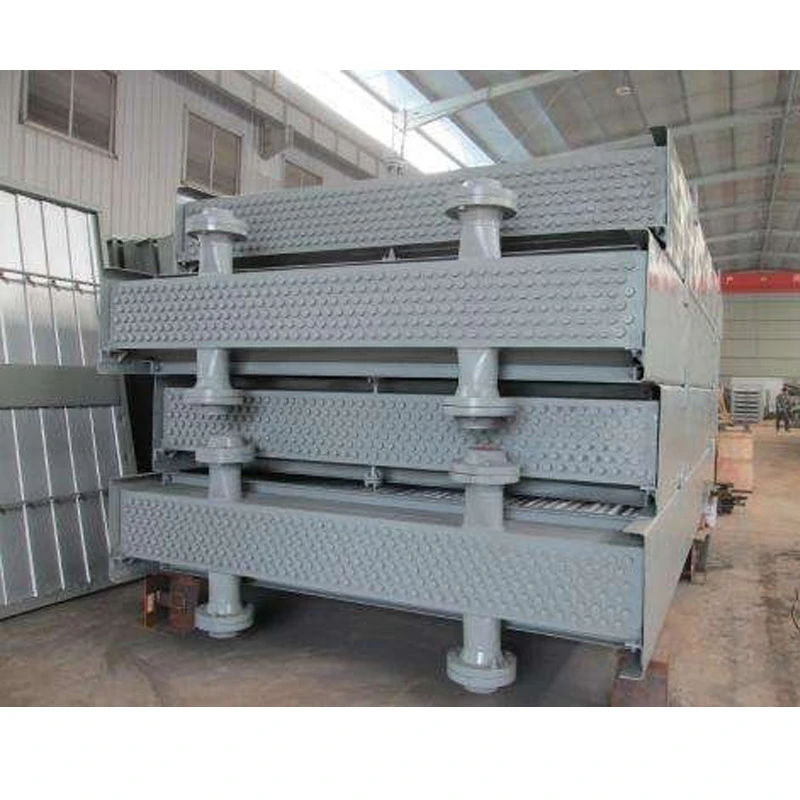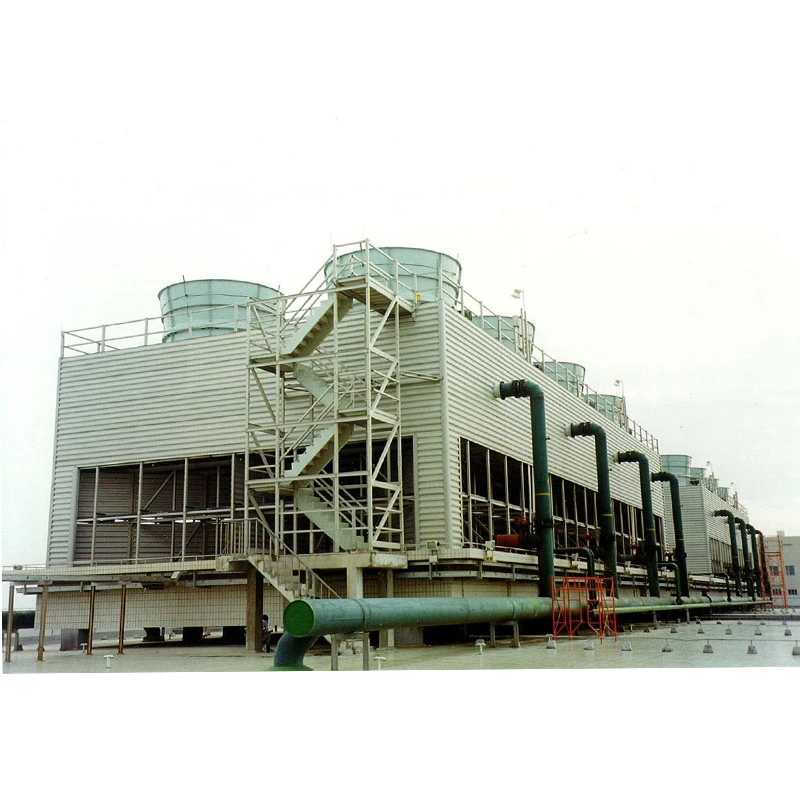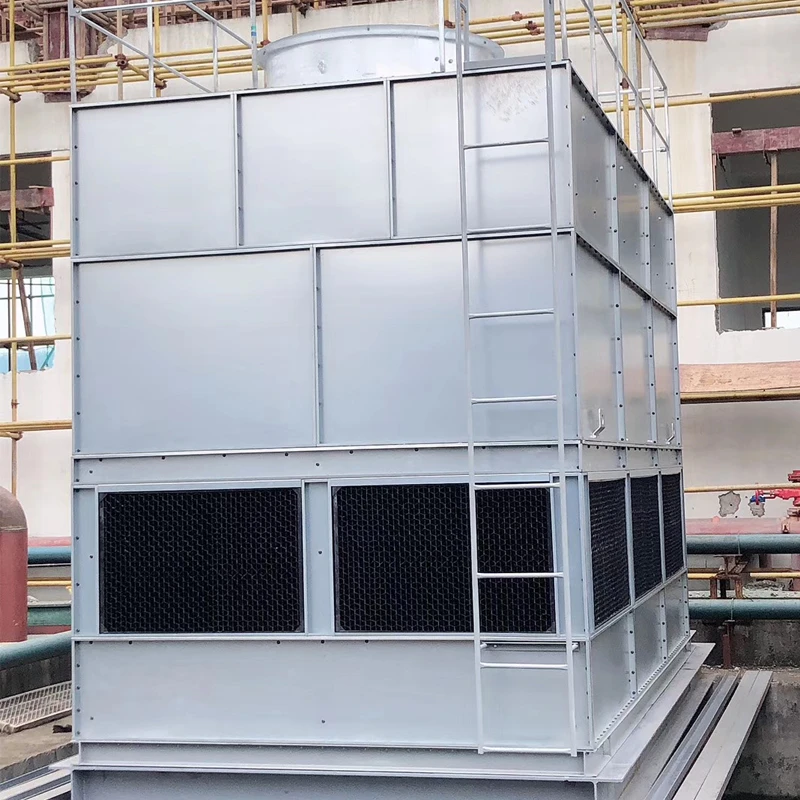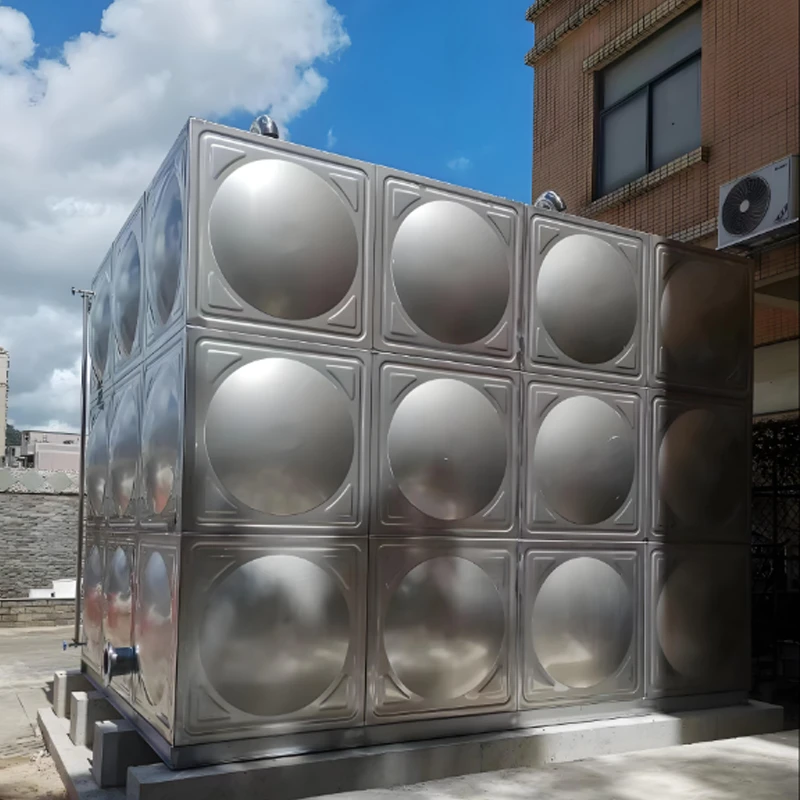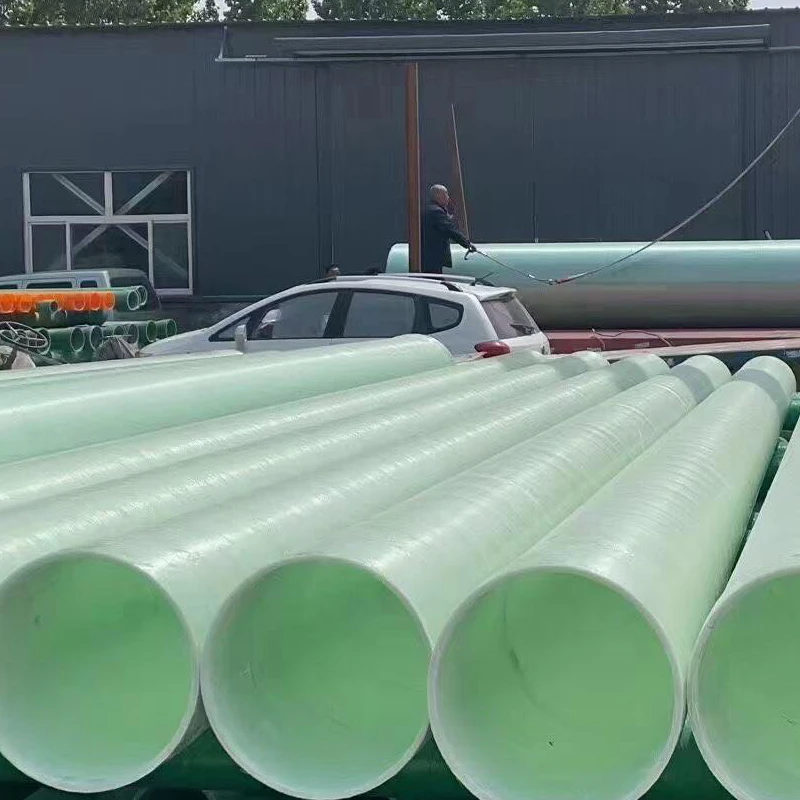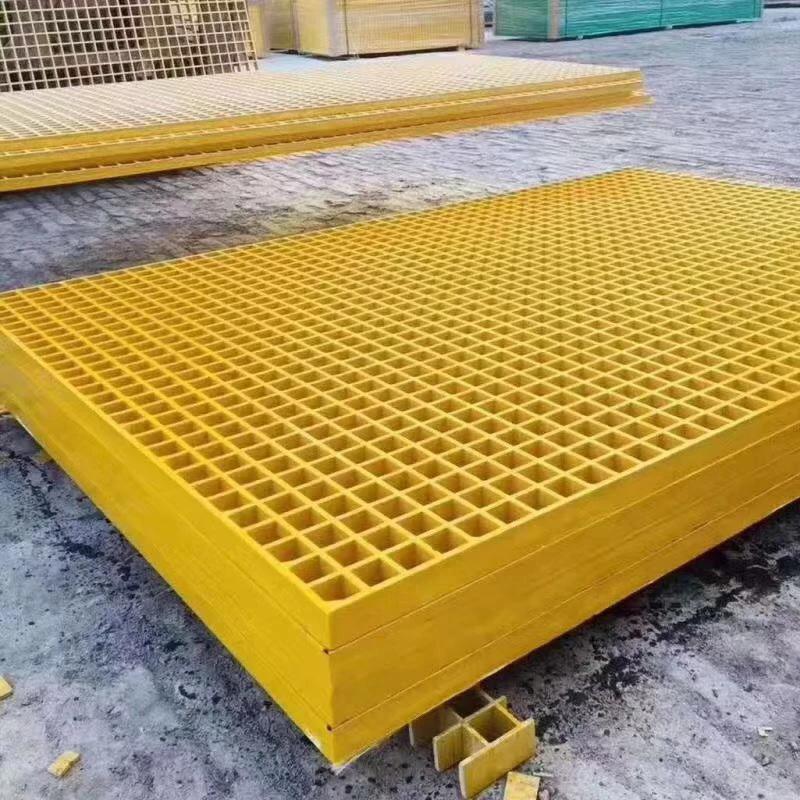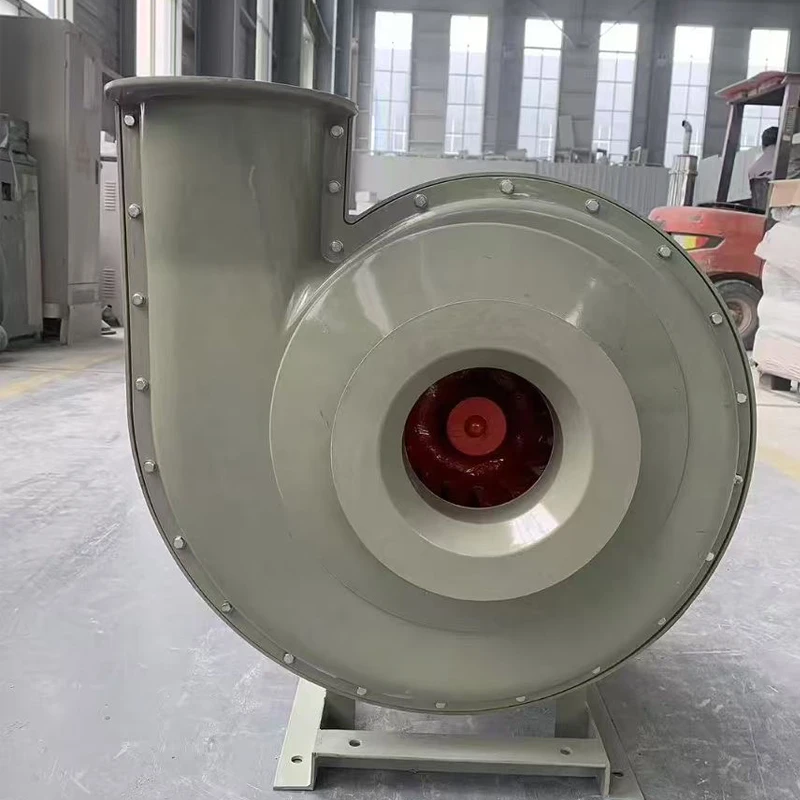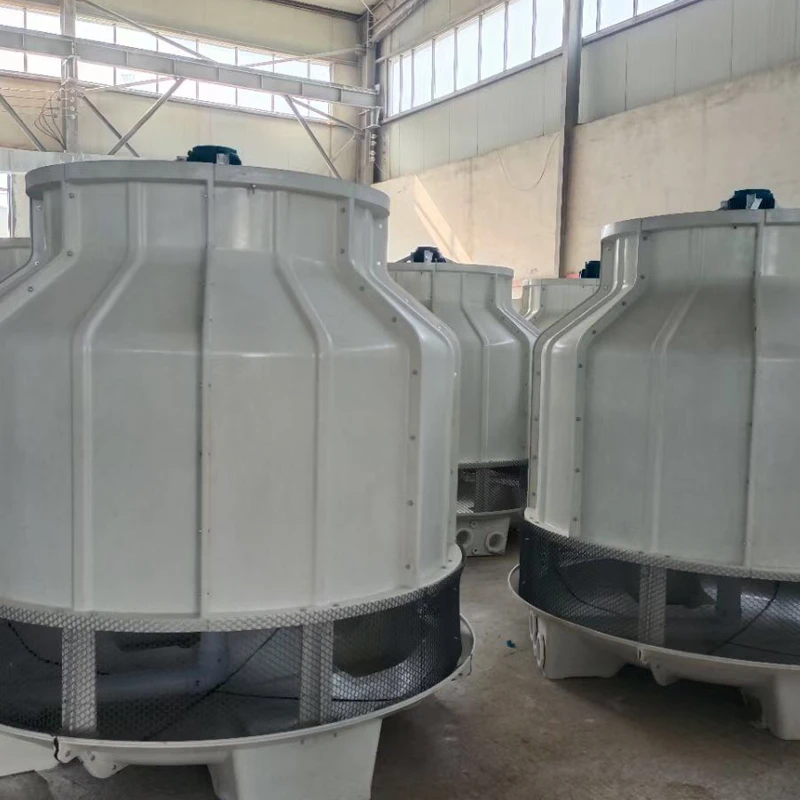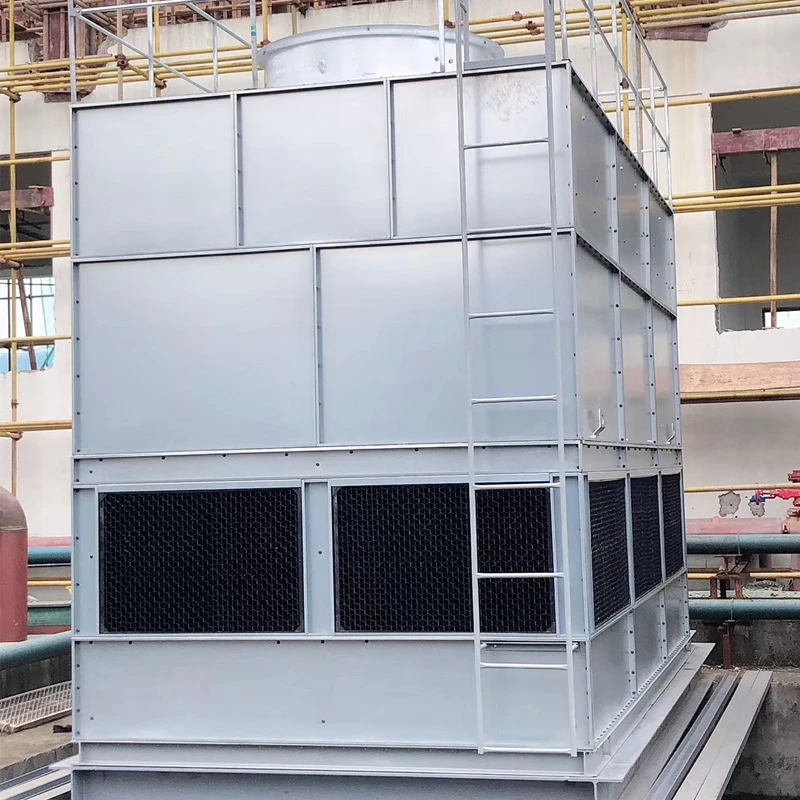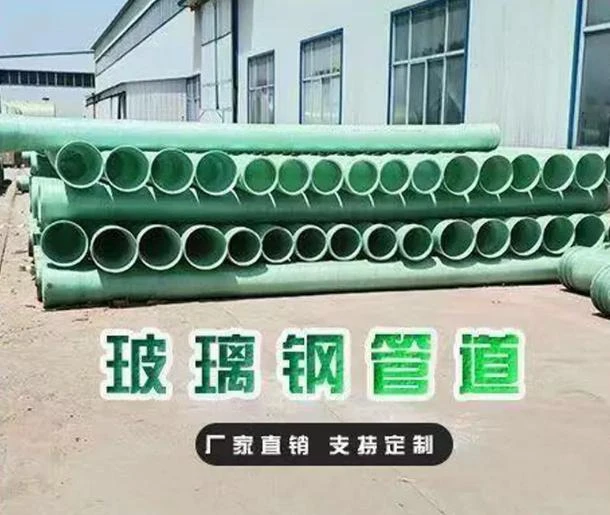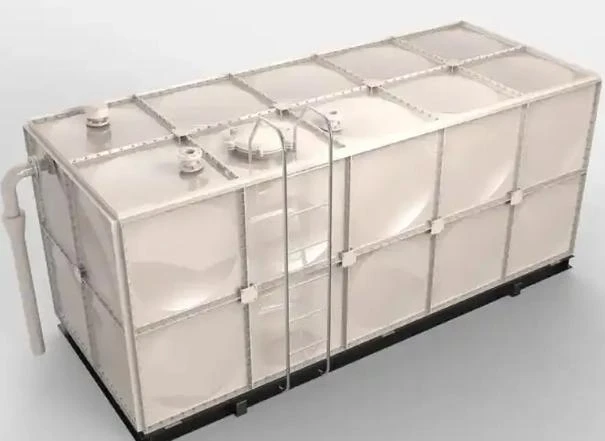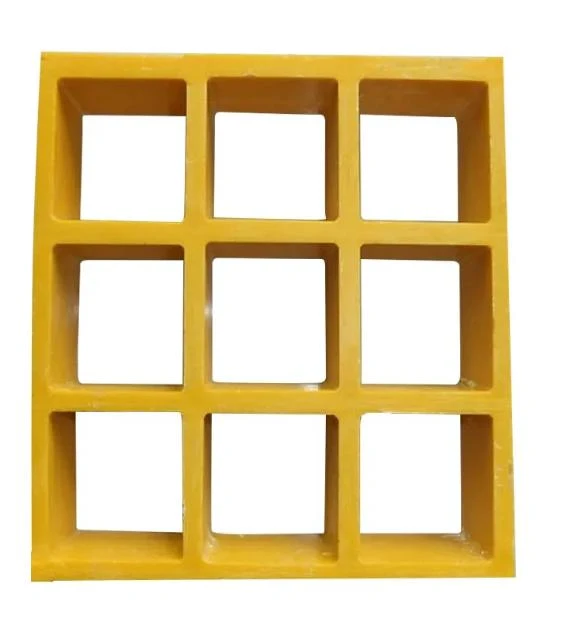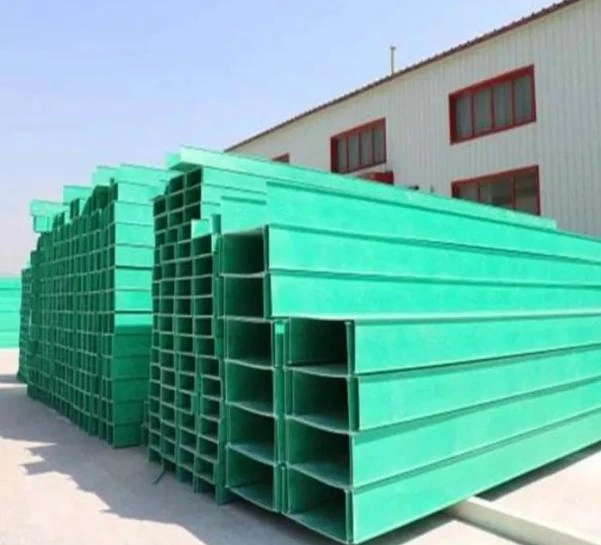

We Are Open 24 Hours a Day, 7 Days a Week, Including Weekends and Public Holidays.
The Indispensable Role of Centrifugal Fans in Modern Industry
In the vast landscape of industrial operations, the efficient movement of air and gases is paramount for safety, productivity, and environmental compliance. Centrifugal fans for sale stand as a critical component in achieving this, providing reliable air handling solutions across a myriad of sectors. These robust machines are engineered to move significant volumes of air at various pressures, addressing the most demanding ventilation, exhaust, and material conveyance needs. From simple air circulation to managing corrosive fumes and high-temperature gases, the right centrifugal fan is vital for optimizing process efficiency and ensuring a safe working environment. This comprehensive guide delves into the technical intricacies, application diversity, and superior benefits of modern centrifugal fan solutions, particularly highlighting advancements in materials like Fiber Reinforced Polymer (FRP) for specialized applications.
The demand for high-performance, energy-efficient, and durable industrial fans continues to grow, driven by stringent environmental regulations and the need for operational cost reduction. Understanding the core principles, manufacturing excellence, and tailored solutions available is key for B2B decision-makers seeking optimal air management systems. Our focus here is to provide an in-depth perspective on the latest trends and technological innovations in the centrifugal fan market, offering valuable insights for engineers, procurement specialists, and facility managers.
Unpacking the Engineering: Core Principles of Centrifugal Fans
At its core, a centrifugal fan operates by increasing the velocity of air with a rotating impeller. Air enters the fan wheel, is turned 90 degrees, and is accelerated radially outward by centrifugal force, then discharged into the fan casing (volute) where its velocity energy is converted into pressure energy. This principle allows centrifugal fans for sale to generate higher static pressures compared to axial fans, making them suitable for systems with significant resistance, such as ductwork, filters, and other process equipment.
Key components include the impeller (blades, hub, shroud), casing, inlet, outlet, and drive mechanism (motor, shaft, bearings). Impeller types vary, including forward-curved (FC), backward-inclined (BI), backward-curved (BC), and radial blade designs, each offering distinct pressure-volume characteristics and efficiencies suitable for different applications. For instance, a large centrifugal blower often employs backward-inclined blades for high efficiency and non-overloading power characteristics, ideal for general HVAC and industrial ventilation, while a large centrifugal fan might utilize radial blades for handling abrasive materials in pneumatic conveying systems.
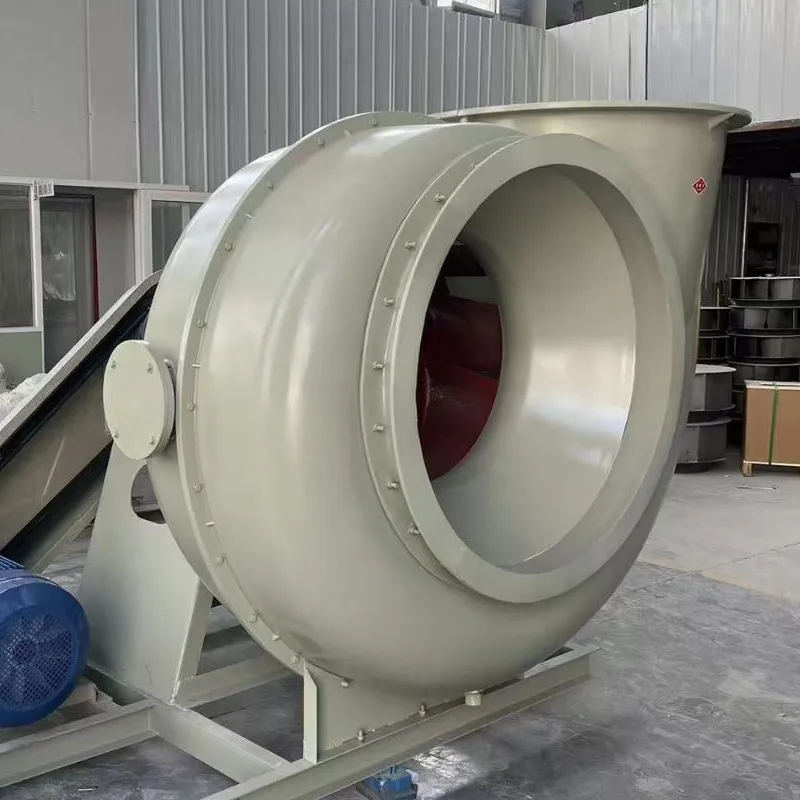
The choice of impeller design, material, and motor type significantly impacts the fan's performance, energy consumption, and longevity. Modern computational fluid dynamics (CFD) and finite element analysis (FEA) are routinely employed during design to optimize airflow, minimize turbulence, reduce noise, and ensure structural integrity, even for specialized frp centrifugal blower designs.
The Advanced Manufacturing Process of FRP Centrifugal Fans
The manufacturing of high-quality Frp Centrifugal Fan units is a meticulous process demanding precision, material expertise, and adherence to rigorous quality standards. Unlike traditional metallic fans, FRP fans leverage the superior chemical resistance and strength-to-weight ratio of composite materials, making them indispensable in corrosive environments.
1. Material Selection and Preparation:
The journey begins with selecting appropriate resin systems (e.g., polyester, vinyl ester, epoxy) based on the specific chemical resistance and temperature requirements of the application. Reinforcing fibers, typically fiberglass matting, woven roving, or chopped strands, are chosen for structural integrity. Each batch of raw materials undergoes stringent quality checks to ensure compliance with international standards such as ASTM or ISO, verifying resin viscosity, glass content, and curing properties.
2. Fabrication Methodologies:
- Hand Lay-up/Contact Molding: This method is widely used for casings and complex components. Layers of fiberglass reinforcement are impregnated with resin by hand, ensuring thorough wet-out and consolidation. Multiple layers are built up to achieve the required thickness and strength.
- Filament Winding: For cylindrical parts like fan casings or ducts, filament winding offers superior strength and consistent wall thickness. Resin-impregnated continuous glass rovings are precisely wound onto a rotating mandrel.
- Resin Transfer Molding (RTM)/Vacuum Infusion: For high-volume or intricate parts, these closed-molding processes offer better consistency, higher fiber volume fractions, and reduced VOC emissions. Dry fiber preforms are placed in a mold, which is then closed, and resin is injected or drawn in under vacuum.
- Precision CNC Machining: While the primary components are molded, critical metallic parts like shafts, bearing housings, and mounting bases require high-precision CNC machining. This ensures tight tolerances for smooth operation, minimal vibration, and extended service life.

3. Curing and Post-Curing:
After fabrication, components undergo a curing process, often at controlled temperatures, to achieve optimal mechanical properties. Post-curing in ovens at elevated temperatures may be employed for specific resins to enhance chemical resistance and thermal stability, crucial for the long-term performance of centrifugal fans for sale in demanding environments.
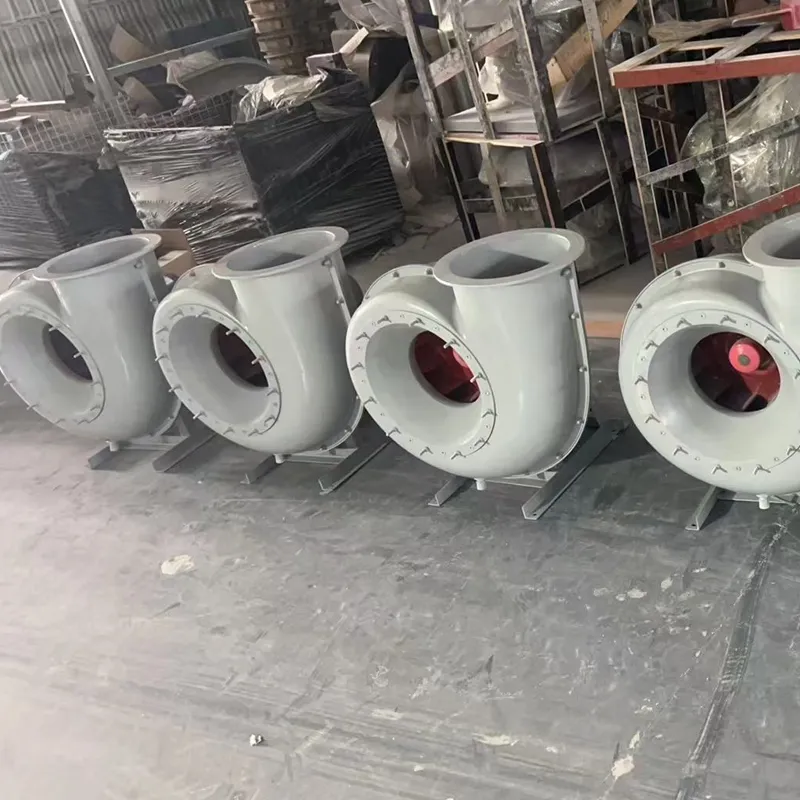
4. Assembly and Balancing:
Once cured, individual FRP components (impeller, casing halves, inlet cone) are assembled with precision-machined metallic parts. A critical step is dynamic balancing of the impeller. Using advanced balancing machines, the impeller's rotational balance is fine-tuned to ISO 1940-1 standards (e.g., G2.5 balance grade), minimizing vibration, reducing bearing wear, and extending the fan's service life, especially vital for large centrifugal blower units.
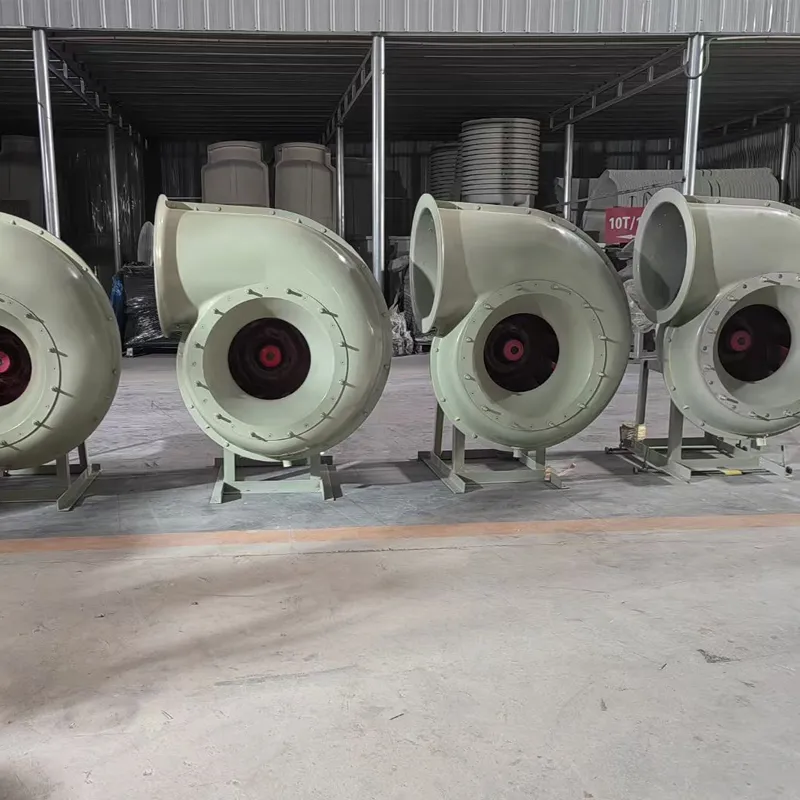
5. Rigorous Quality Control & Testing:
Every fan undergoes a comprehensive series of quality checks and performance testing. This includes visual inspection for surface defects, dimensional checks, hardness testing of FRP laminates, and functional tests (e.g., motor run test, vibration analysis, bearing temperature monitoring). Performance tests confirm compliance with AMCA 210/2007 (Air Movement and Control Association International) standards, verifying airflow, static pressure, power consumption, and sound levels against design specifications. Only units that pass all stringent checks are cleared for dispatch, ensuring the reliability and long-term performance expected from high-grade centrifugal fans for sale.
Key Technical Parameters & Performance Metrics of Centrifugal Fans
Selecting the correct centrifugal fans for sale requires a thorough understanding of their technical specifications and performance metrics. These parameters dictate a fan's suitability for specific industrial applications, directly influencing operational efficiency and system compatibility. Below is a table outlining typical parameters for industrial centrifugal fans, including large centrifugal blower models and FRP variants:
| Parameter | Description | Typical Range (Industrial Fans) | Impact on Performance |
|---|---|---|---|
| Airflow Capacity (CFM / m³/h) | Volume of air moved per unit of time. | 500 - 500,000+ CFM (850 - 850,000+ m³/h) | Determines the fan's ability to ventilate a space or transport material. |
| Static Pressure (in. WG / Pa) | Resistance the fan must overcome to move air through a system. | 0.5 - 60+ in. WG (125 - 15,000+ Pa) | Crucial for systems with ductwork, filters, or heat exchangers. |
| Motor Power (HP / kW) | Power required to drive the fan impeller. | 0.5 - 1000+ HP (0.37 - 750+ kW) | Directly impacts energy consumption and operational costs. |
| Operating Temperature Range | Min/Max air temperature the fan can handle. | -20°C to +400°C (Metallic) / -20°C to +120°C (FRP) | Dictates material selection; FRP fans excel in corrosive but lower temp environments. |
| Noise Level (dBA) | Sound output generated by the fan. | 70 - 110 dBA (without attenuation) | Important for occupational health and safety regulations. |
| Efficiency (Static / Total) | Ratio of useful power output to power input. | 40% - 85% (depending on type and operating point) | Higher efficiency means lower energy consumption and operational costs. |
| Impeller Diameter | Diameter of the rotating fan wheel. | 100mm - 4000mm+ | Directly influences airflow, pressure, and physical size of the fan. |
Understanding the interplay between these parameters is critical for system designers. For instance, a large centrifugal fan designed for high airflow might sacrifice some static pressure, while a fan for corrosive gas scrubbing needs superior material resistance, like that offered by a frp centrifugal blower. Advanced manufacturers utilize performance curves and selection software to precisely match fan characteristics to specific system requirements, ensuring optimal long-term performance and minimizing lifecycle costs.
Diverse Applications Across Industries
The versatility of centrifugal fans for sale makes them indispensable across a wide array of industrial sectors. Their ability to handle various air volumes and pressures, combined with specialized material construction, allows them to excel in environments where other fan types would fail. Here are some key application scenarios:
- Petrochemical & Chemical Processing: Critical for fume extraction, ventilation of hazardous areas, and gas scrubbing systems. FRP centrifugal blower units are particularly favored here due to their exceptional resistance to corrosive acids, alkalis, and solvents, ensuring longevity and safety in volatile atmospheres.
- Metallurgy & Mining: Used in dust collection systems, furnace ventilation, and general exhaust. High-temperature and abrasion-resistant large centrifugal fan designs are often employed to withstand harsh conditions and particulate-laden air.
- Wastewater Treatment & Water Supply/Drainage: Essential for odor control, aeration, and ventilation of pump stations. FRP fans are ideal in these moist, chemically active environments, preventing corrosion from hydrogen sulfide and other aggressive gases found in municipal and industrial wastewater facilities.
- Power Generation: Employed in boiler draft systems (forced draft, induced draft), cooling towers, and ash handling. Large centrifugal blower units are designed for high-volume, high-pressure applications to ensure efficient combustion and environmental control.
- Pharmaceutical & Food Processing: Used in cleanroom ventilation, drying processes, and dust control. Stainless steel or FRP fans ensure hygienic operation and prevent contamination.
- Pulp & Paper: Integral to chemical recovery, dust extraction, and process air supply where corrosive or humid air streams are common.
- HVAC & General Industrial Ventilation: Providing fresh air, exhausting stale air, and maintaining comfortable temperatures in factories, warehouses, and commercial buildings.
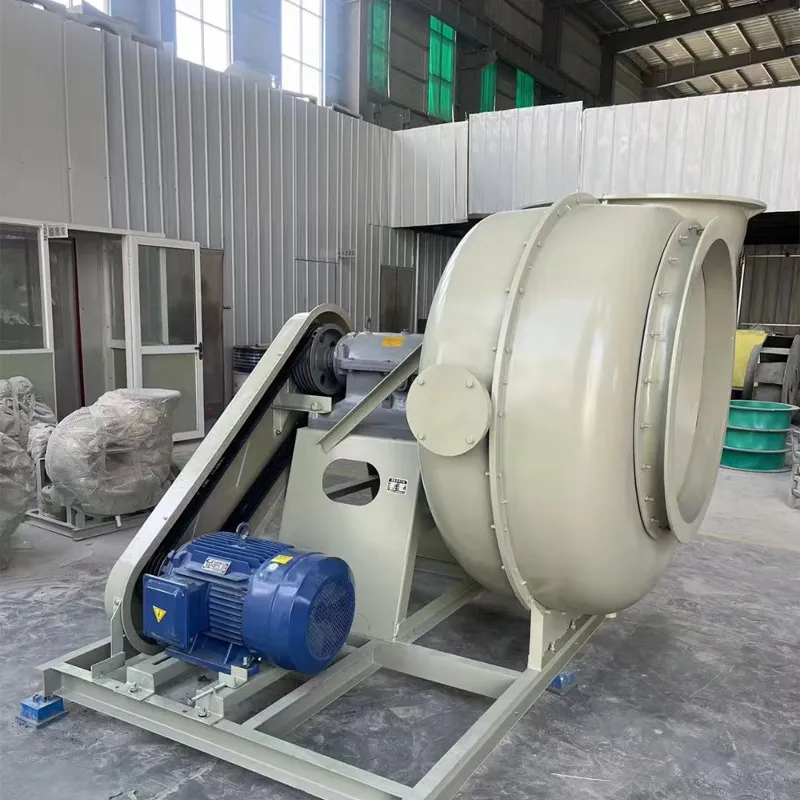
In each of these sectors, the specific design, material, and performance characteristics of the centrifugal fan are tailored to meet unique operational challenges, emphasizing energy efficiency, reliability, and minimal maintenance requirements.
Technical Advantages of FRP Centrifugal Fans
While traditional metallic fans serve many purposes, the advent of Fiber Reinforced Polymer (FRP) technology has revolutionized the capabilities of centrifugal fans for sale, particularly in challenging industrial environments. Frp Centrifugal Fan models offer distinct advantages that translate into significant operational benefits and long-term cost savings:
- Superior Corrosion Resistance: This is the primary advantage. FRP is impervious to a wide range of aggressive chemicals, acids, alkalis, and corrosive gases that would rapidly degrade metallic fans. This makes frp centrifugal blower units ideal for applications involving corrosive fumes from chemical processes, pickling lines, or exhaust from scrubbers.
- Exceptional Durability and Service Life: Due to their inherent resistance to chemical attack and environmental degradation, FRP fans boast a significantly longer service life compared to their metallic counterparts in corrosive conditions. This reduces the frequency of replacements and associated downtime.
- Lightweight Construction: FRP is considerably lighter than steel, cast iron, or other metals. This reduces the overall weight of the fan unit, simplifying installation, potentially requiring lighter support structures, and lowering transportation costs. This also contributes to reduced power consumption for the same performance.
- Energy Efficiency: The smooth, non-porous surface of FRP reduces internal friction and turbulence, contributing to higher aerodynamic efficiency. When combined with optimized impeller designs, this can lead to lower operating power requirements, translating into substantial energy savings over the fan's lifespan.
- Lower Maintenance Requirements: FRP fans do not rust or corrode, drastically reducing the need for costly painting, coating, or frequent inspections associated with metal fans in harsh environments. This minimizes maintenance labor and material costs.
- Spark Resistance (Optional): Certain FRP compositions can be formulated to be spark-resistant, making them suitable for handling flammable or explosive gas mixtures, enhancing safety in critical industrial processes.
- Noise Reduction: The composite material's inherent damping properties can help in reducing noise transmission, contributing to a quieter operational environment compared to some metallic fans.
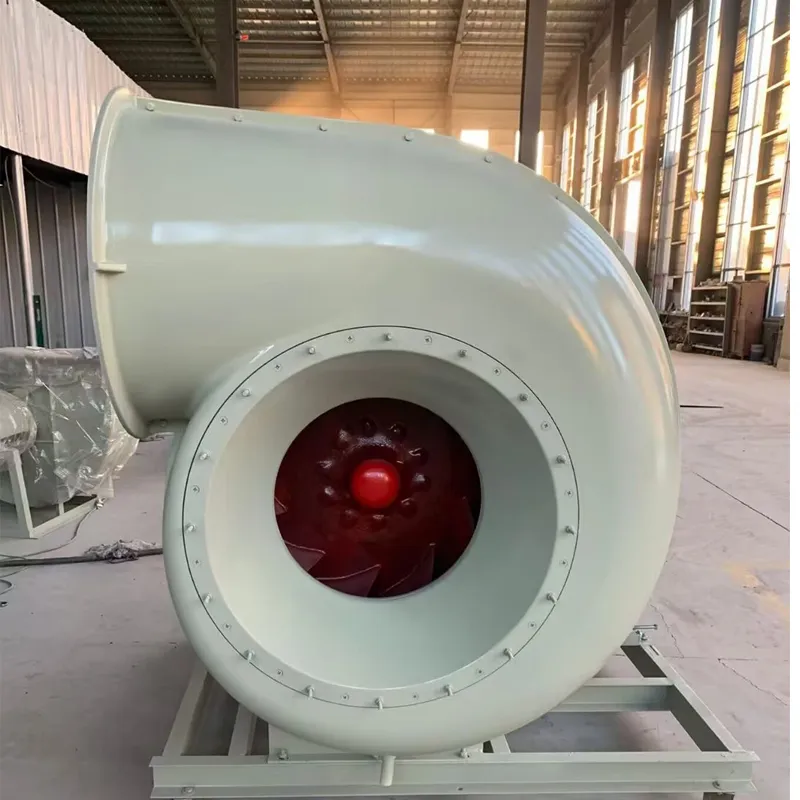
These advantages position FRP centrifugal fans as a highly cost-effective and reliable choice for demanding industrial applications where corrosion, weight, and long-term operational costs are critical considerations.
Choosing Your Supplier: Manufacturer Comparison & Customization
When sourcing centrifugal fans for sale, especially for specialized industrial applications, the choice of manufacturer is as crucial as the fan's specifications. A reputable manufacturer offers not just a product, but a partnership, providing expertise, quality assurance, and ongoing support. Here's what to consider:
- Experience & Reputation: Look for manufacturers with a proven track record in your specific industry. Years of operation and positive client testimonials (case studies, references) are strong indicators of reliability and expertise in producing high-quality large centrifugal fan and frp centrifugal blower units.
- Technical Expertise & R&D: A leading manufacturer invests in R&D, utilizing advanced tools like CFD for optimal aerodynamic design and FEA for structural integrity. Their engineering team should be capable of providing detailed technical proposals, performance curves, and custom solutions.
- Certifications & Quality Standards: Adherence to international standards such as ISO 9001 for quality management, AMCA (Air Movement and Control Association International) certifications for performance testing, and ATEX/explosion-proof certifications where required, signals a commitment to product excellence and safety.
- Customization Capabilities: Industrial applications rarely fit a 'one-size-fits-all' model. A strong manufacturer offers comprehensive customization options, including specific material selection (e.g., specialized resins for extreme corrosive environments), impeller design modifications, special coatings, different drive arrangements (direct drive, belt drive), and accessory integration (dampers, silencers, sensors). This ensures the fan is perfectly optimized for your unique process requirements.
- After-Sales Support & Service: A reliable supplier provides robust after-sales support, including installation assistance, commissioning, training, spare parts availability, and prompt technical troubleshooting. This ensures minimal downtime and sustained performance throughout the fan's operational life.
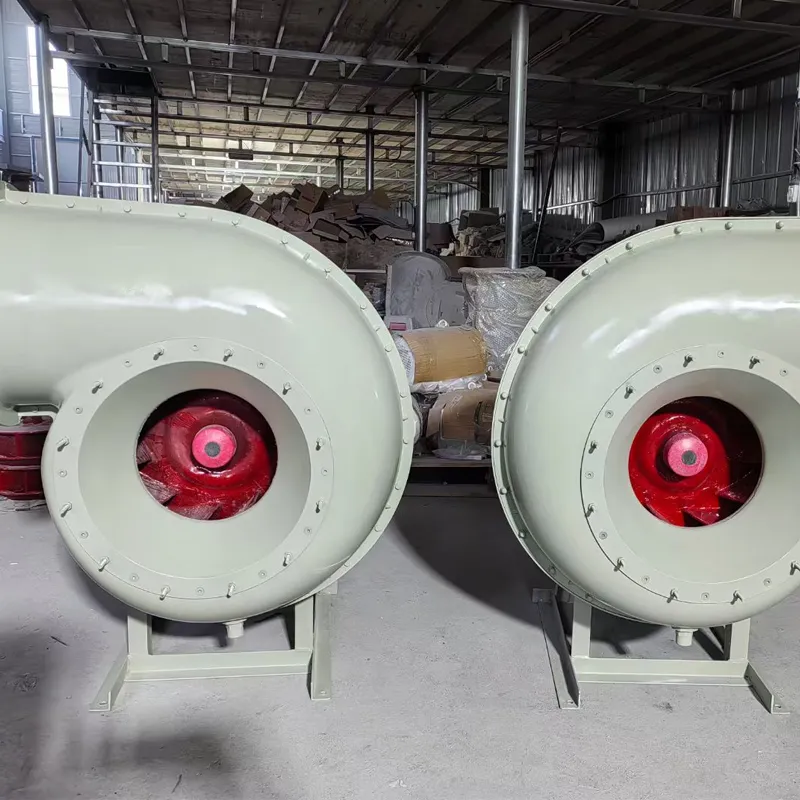
Partnering with a manufacturer that combines deep technical knowledge with a customer-centric approach will ensure you receive a high-performance, durable, and cost-effective centrifugal fan solution tailored precisely to your industrial needs.
Real-World Application Case Studies
The practical impact of well-engineered centrifugal fans for sale is best illustrated through real-world applications. These examples highlight how tailored solutions address specific industrial challenges, delivering measurable improvements in efficiency, safety, and operational longevity.
Case Study 1: Fume Extraction in a Specialty Chemical Plant
A large chemical manufacturing facility faced severe corrosion issues with their existing metallic exhaust fans, which were failing prematurely due to highly acidic fumes (sulfuric acid mist, hydrochloric acid vapor). Frequent replacements led to significant downtime and maintenance costs. A custom frp centrifugal blower was designed with a specific vinyl ester resin system known for its superior resistance to these chemicals. The new FRP fan, with a capacity of 30,000 CFM at 6 in. WG static pressure, was installed. After three years of continuous operation, the FRP fan showed no signs of corrosion, dramatically reducing maintenance interventions and achieving an estimated 40% reduction in fan-related operational costs compared to the previous metallic units. This demonstrated the long-term economic and reliability benefits of composite materials in aggressive environments.
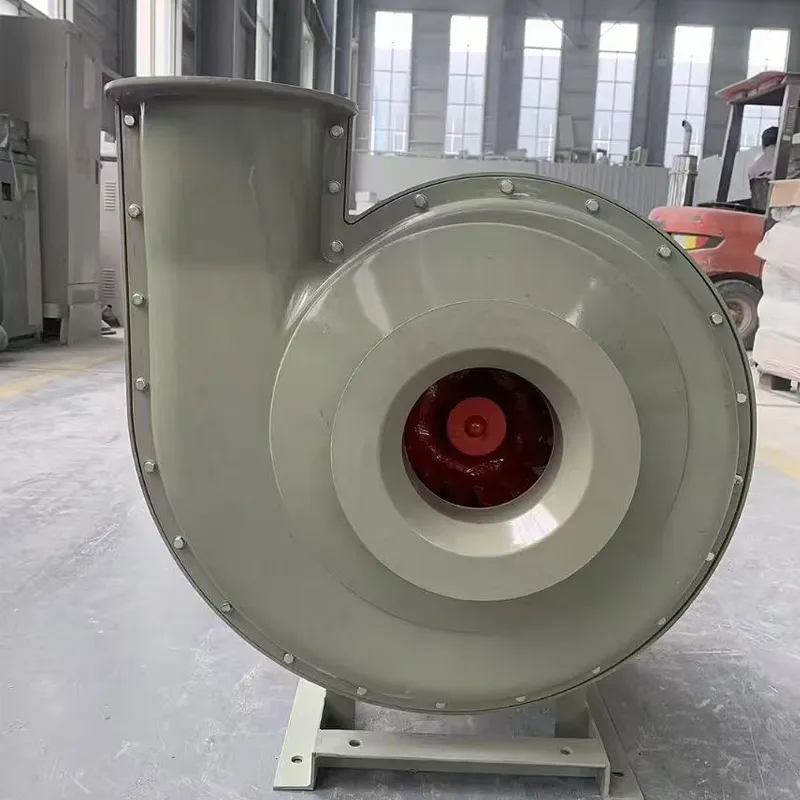
Case Study 2: High-Volume Ventilation for a Steel Mill Pickling Line
A major steel producer required a robust ventilation solution for its pickling line, where nitric and hydrofluoric acid fumes posed a significant challenge. The sheer volume of air requiring exhaust necessitated a large centrifugal fan capable of handling substantial airflow under corrosive conditions. A custom large centrifugal blower with a 150 HP motor and a specialized FRP casing and impeller was engineered to manage 75,000 CFM at 8 in. WG. The fan's robust construction, incorporating UV-stabilized resins and an abrasion-resistant lining, ensured it could withstand both chemical attack and potential particulate erosion. This solution not only effectively removed hazardous fumes, improving worker safety and air quality, but also provided a durable asset with minimal upkeep requirements, supporting continuous production cycles.
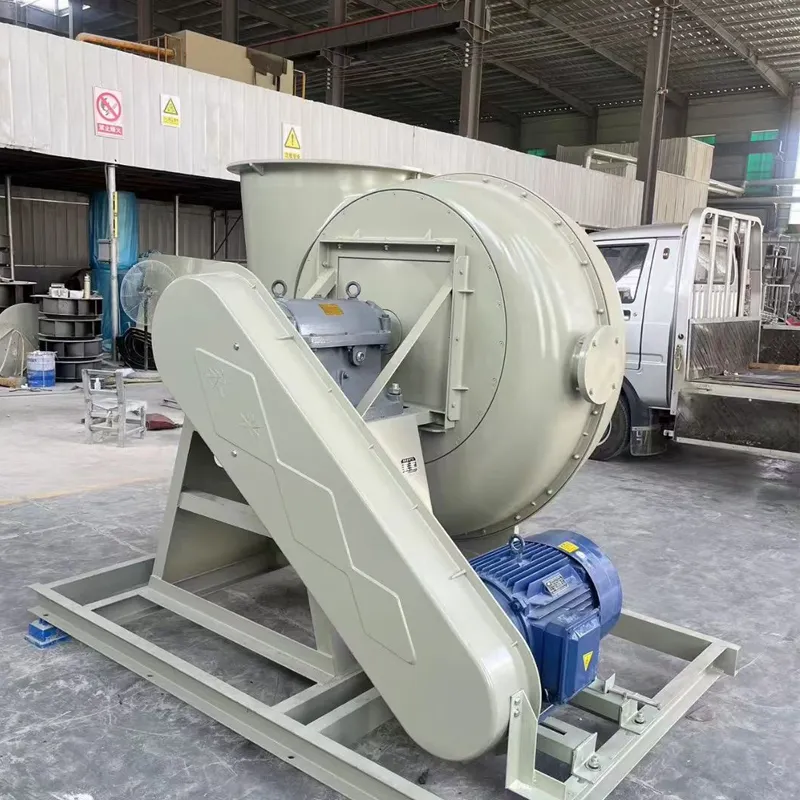
These case studies underscore the importance of selecting the right technology and partner when investing in centrifugal fans for sale for specialized industrial environments. Tailored FRP solutions consistently deliver enhanced performance, extended lifespan, and significant operational savings.
Ensuring Trust: Our Commitment to Quality and Support
At Longxuan FRP, our commitment extends beyond delivering high-performance Frp Centrifugal Fan solutions. We prioritize building lasting relationships based on trust, transparency, and unwavering support. This commitment is underpinned by stringent quality assurance, comprehensive after-sales service, and efficient logistics.
Quality Assurance & Certifications:
Every centrifugal fans for sale unit manufactured by Longxuan FRP adheres to the highest international quality standards. Our manufacturing processes are ISO 9001 certified, ensuring consistent quality management from design to delivery. We rigorously test each fan's performance according to AMCA 210/2007 (Fans & Systems Standards) and ISO 5801 (Performance Testing), verifying airflow, pressure, power, and noise levels. Material traceability is maintained throughout the production cycle, and detailed quality control reports are provided with each delivery. Our expertise is backed by over 20 years of dedicated service in the FRP fan industry, supplying robust solutions to major players in the petrochemical, metallurgy, and wastewater sectors globally.
Warranty & After-Sales Support:
We stand behind the durability and performance of our large centrifugal blower and large centrifugal fan products with a comprehensive warranty program. Our standard warranty covers defects in material and workmanship for [typically 12-24 months from commissioning or 18-30 months from shipment, depending on terms]. Beyond the warranty period, our dedicated technical support team is available for troubleshooting, maintenance advice, and spare parts supply, ensuring your operations run smoothly for years to come. We also offer on-site support and training for complex installations or specific maintenance needs.
Delivery & Logistics:
Understanding the time-critical nature of industrial projects, we strive for efficient production and timely delivery. Our typical lead times range from 4-8 weeks for standard models and 8-16 weeks for highly customized frp centrifugal blower units, depending on complexity and current production load. We manage robust logistics, ensuring secure packaging and reliable shipment to your facility, whether domestic or international. Communication is key, and our project managers keep you informed at every stage, from order confirmation to dispatch and arrival.
Frequently Asked Questions (FAQ) about Centrifugal Fans
-
Q: What is the primary advantage of an FRP centrifugal fan over a metallic one?
A: The primary advantage is superior corrosion resistance. FRP fans, like the Frp Centrifugal Fan, are designed to withstand highly corrosive chemical environments that would quickly degrade metallic fans, leading to significantly longer service life and reduced maintenance in such applications.
-
Q: How do I determine the correct size and type of centrifugal fans for sale for my application?
A: Determining the correct fan requires considering several factors: required airflow (CFM/m³/h), static pressure (in. WG/Pa), operating temperature, composition of the air stream (corrosive, abrasive particles), available space, and noise limitations. It's highly recommended to consult with our engineering team who can perform detailed calculations and recommend the optimal large centrifugal blower or fan based on your specific system curve and process requirements.
-
Q: What is the typical lead time for an frp centrifugal blower?
A: Lead times vary based on the fan's complexity, size, and current production schedule. Standard models typically have a lead time of 4-8 weeks, while highly customized large centrifugal fan units may require 8-16 weeks. We provide clear lead time estimates at the quoting stage and keep clients updated throughout the manufacturing process.
-
Q: What kind of warranty and after-sales support do you offer?
A: We offer a standard warranty of 12-24 months for our centrifugal fans for sale, covering material and workmanship. Our commitment extends to comprehensive after-sales support, including technical assistance, spare parts supply, and troubleshooting, to ensure the long-term reliability and performance of your fan system.
Conclusion: Powering Industry with Advanced Air Movement Solutions
The selection and implementation of the right centrifugal fans for sale are critical decisions for any industrial operation aiming for optimal efficiency, environmental compliance, and long-term sustainability. Modern industrial demands necessitate solutions that go beyond basic air movement, requiring specialized designs capable of enduring harsh conditions while delivering consistent, energy-efficient performance. The evolution of materials, particularly Fiber Reinforced Polymer (FRP), has ushered in a new era of highly resistant and durable fan systems, exemplified by the advanced Frp Centrifugal Fan. These innovations address the most challenging corrosive and demanding environments, significantly extending asset life and reducing operational expenditures. By prioritizing technical excellence, customization capabilities, and unwavering after-sales support, leading manufacturers empower industries to achieve superior air management outcomes, fostering safer, more productive, and environmentally responsible operations. Investing in high-quality centrifugal fan technology is not merely a purchase; it's a strategic decision for the future of your industrial processes.
References
- Air Movement and Control Association International (AMCA) Standards and Publications.
- International Organization for Standardization (ISO) 9001:2015 Quality Management Systems – Requirements.
- International Organization for Standardization (ISO) 5801:2017 Industrial fans – Performance testing using standardized airways.
- Fiberglass Reinforced Plastics (FRP) Institute Technical Manuals and Guides.
- American Society for Testing and Materials (ASTM) Standards for Composite Materials.





Address
20 Xingyuan South Street, Zaoqiang County, Hengshui City, Hebei Province, China









